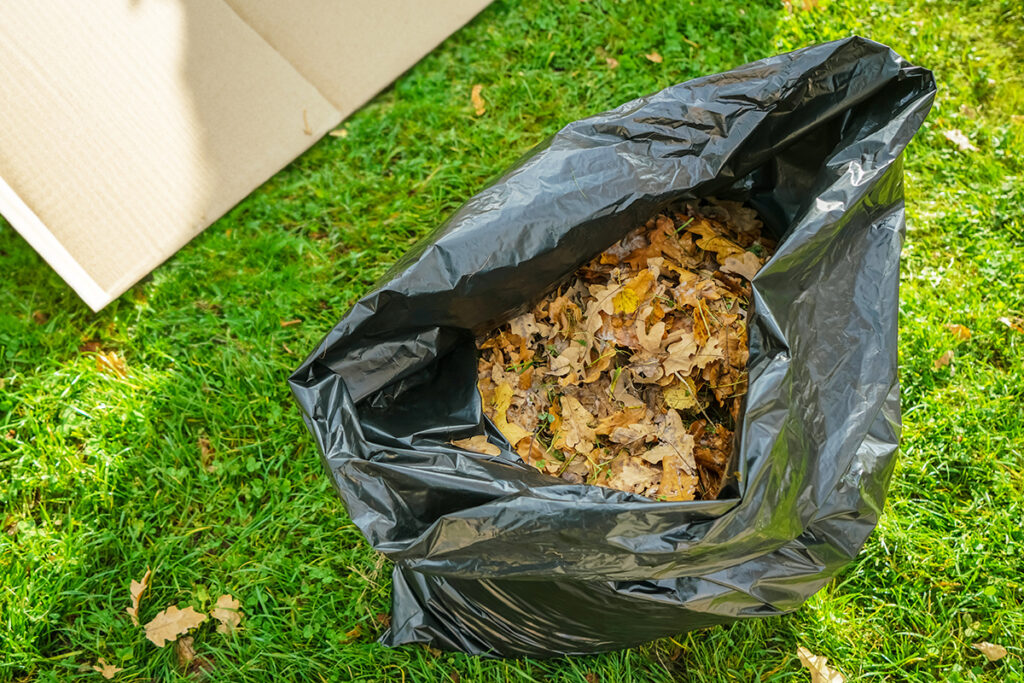
Bagged leaves often end up in landfills, but these humble remnants hold a treasure trove of potential for your garden and beyond. They offer a sustainable and cost-effective way to improve soil health, suppress weeds, retain moisture, and even create nutrient-rich compost. By embracing the versatility of bagged leaves, you can transform them from waste into valuable resources, contributing to a greener lifestyle.
This article will delve into various ways to utilize bagged leaves, exploring their benefits as mulch, compost material, and even sustainable alternatives for packing and crafting. From enriching your garden soil to reducing waste, we’ll uncover the surprising potential hidden within those humble bags of leaves.
Bagged Leaves as Mulch
Mulching is a fundamental practice in gardening, providing numerous benefits for plant health and soil conservation. Bagged leaves make an excellent mulch material due to their readily available supply and natural decomposition properties. Applying a layer of bagged leaves around your plants creates a protective barrier against weed growth, suppressing their emergence and reducing the need for herbicides.
Furthermore, leaf mulch acts as a natural insulator, helping to regulate soil temperature and retain moisture. This is particularly beneficial during hot summer months when evaporation rates are high, ensuring your plants stay hydrated and thrive. As the leaves decompose, they release valuable nutrients into the soil, enriching its structure and promoting healthy root development.
When using bagged leaves as mulch, aim for a layer thickness of 2-3 inches around your plants, avoiding direct contact with stems to prevent rot. Regularly replenish the mulch layer as it decomposes, ensuring continuous weed suppression and soil enrichment.
Composting Bagged Leaves
Composting is an eco-friendly way to recycle organic waste, transforming it into nutrient-rich fertilizer for your garden. Bagged leaves are a valuable component of compost piles due to their high carbon content, providing the necessary balance for decomposition.
To create a successful compost pile with bagged leaves, combine them with “green” materials like grass clippings, kitchen scraps, and manure. These green materials provide nitrogen, essential for microbial activity and nutrient breakdown. Maintain a ratio of approximately 2:1 (brown to green) for optimal composting. Regularly turn the compost pile to aerate it and promote even decomposition.
Composting bagged leaves can take several months depending on factors like temperature, moisture levels, and the size of your pile. Once the compost is dark brown, crumbly, and smells earthy, it’s ready to use as a soil amendment or fertilizer for your plants.
Sustainable Uses for Shredded Leaves
Beyond mulching and composting, shredded bagged leaves offer a surprising array of sustainable uses. Shredding leaves creates smaller pieces that decompose faster and can be incorporated into various projects.
Packing Material
Shredded leaves make an excellent natural packing material for fragile items during shipping or storage. Their cushioning properties protect delicate objects from damage while providing a biodegradable alternative to traditional packing peanuts.
Craft Projects
The versatility of shredded leaves extends to crafting projects, adding texture and natural beauty to various creations. Use them in wreaths, garlands, potpourri, or even as decorative accents for homemade cards and gift tags.
Benefits of Using Bagged Leaves
Utilizing bagged leaves offers a multitude of benefits for both your garden and the environment:
- Cost-Effective: Bagged leaves are often readily available and free, eliminating the need to purchase expensive mulches or fertilizers.
- Sustainable: By repurposing bagged leaves, you reduce waste sent to landfills and promote a circular economy.
- Soil Enrichment: Decomposing leaves release valuable nutrients into the soil, improving its fertility and structure.
- Weed Suppression: Mulching with bagged leaves effectively suppresses weed growth, reducing the need for herbicides.
- Moisture Retention: Leaf mulch helps retain soil moisture, promoting healthy plant growth and reducing water usage.
Conclusion
Bagged leaves are a versatile resource that can be transformed into valuable assets for your garden and beyond. From mulching and composting to sustainable crafting and packing solutions, these humble remnants offer a wealth of possibilities. By embracing the potential of bagged leaves, you can contribute to a more sustainable lifestyle while enriching your gardening endeavors.
